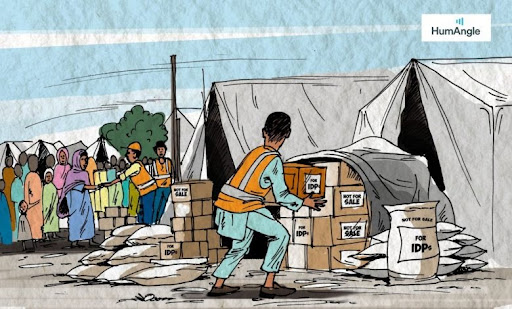- IDPs should not have to struggle to access basic resources or fear that their rights would be violated — if only the country implemented a better part of its own policy.
Since it returned to democratic rule in 1999, Nigeria has faced a steady rise in the number of Internally Displaced Persons (IDPs). Ethnic fault lines thought to have previously been kept in check by the military authorities suddenly broke out, especially in the north-central region, leading to the displacement of tens of thousands of people by the middle of 2002.
That year, the federal agency in charge of refugees had its mandate expanded to cater for IDPs too. And in 2003, the government set up a committee to develop a policy to guide the management of IDPs. Various government and non-governmental groups rubbed minds while gaining inspiration from existing international laws. The outcome of this effort, adopted nine years later, came to be known as the National Policy on Internally Displaced Persons in Nigeria.
The policy has become even more relevant today, considering how much the population of displaced people has increased since 2012. As of Dec. 2015, the International Organisation for Migration (IOM) had documented only about 390,000 displaced persons, mostly in Northeast Nigeria where the Boko Haram insurgency had erupted years earlier. By Dec. 2021, this number had grown to over 2.2 million, with the Internal Displacement Monitoring Centre (IDMC) estimating that the total population could be as high as 2.7 million. Presently, nearly all parts of northern Nigeria host IDPs.
Topics covered by the national policy range from the duties of the government to the responsibilities of humanitarian agencies, rights and obligations of host communities, implementation and funding strategies, as well as evaluation systems. Chapter III particularly lists the rights and obligations of IDPs. Displaced people, the policy assures, are entitled to all the rights Nigeria’s constitution guarantees each citizen. But they also have rights specific to them. These are highlighted under eight categories: Rights to Protection from Displacement; Rights to Assistance During and After Displacement; Rights of Displaced Children; Rights of Displaced Women; Rights of IDPs with Disabilities; Rights of IDPs Living with HIV; Rights of Elderly IDPs; and finally Rights to Voluntary Return, Local Integration, and Relocation.

Protection from displacement
This section prohibits arbitrary displacement, which could mean a number of things, including discriminatory or punitive displacement, displacement due to human rights abuses or harmful practices, or the displacement of a people when the situation does not warrant it.
HumAngle has, however, reported the experiences of people whose communities were set ablaze by the Nigerian military during counterinsurgency operations, like this couple from Ziye, a village at the outskirts of Bama Local Government Area (LGA).
Amnesty International has documented more recent instances of arson and arbitrary displacement by the military in Bukarti, Ngariri, and Matiri, villages close to the Maiduguri-Damaturu road. “We saw our houses go into flames. We all started crying,” said one displaced woman.
The section of the policy also regulates cases of forced evictions, stipulating 11 requirements for such exercises, including the provision of reasonable notice, legal aid, and adequate compensation, the registration of those evicted, and prohibition of evictions during bad weather or at night. Many of these rules have been flouted since the policy was adopted as well.
READ THE FULL REPORT HERE:
